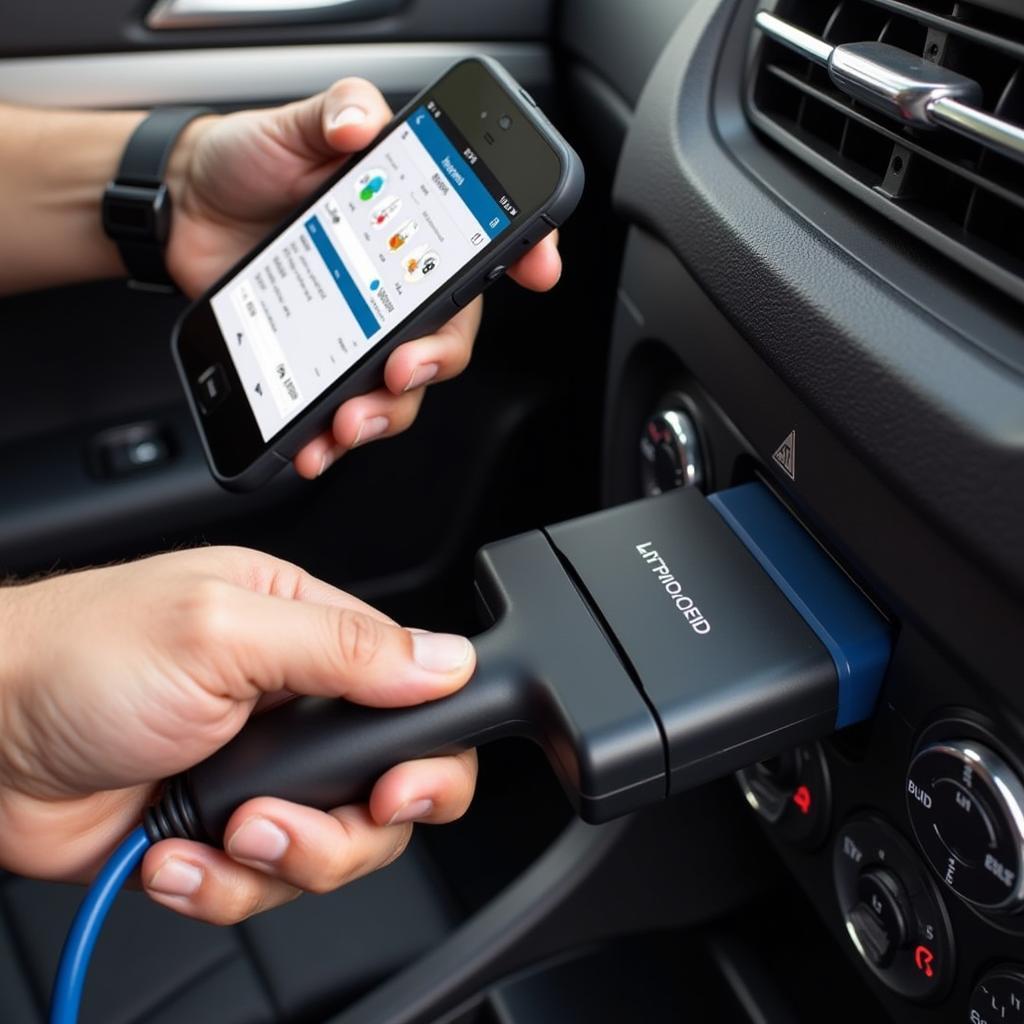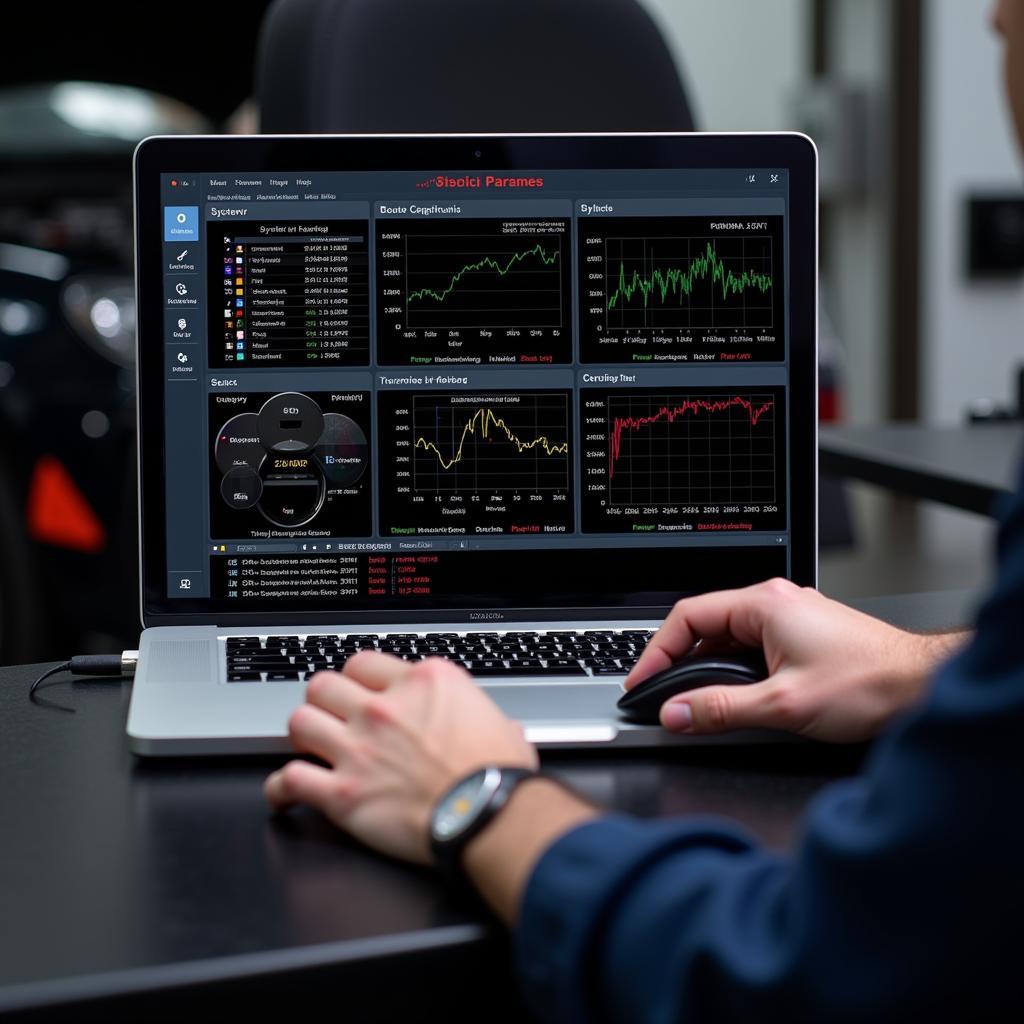Modern vehicles are increasingly reliant on complex electronic systems. When a warning light illuminates on your dashboard, it’s a signal from your car’s computer that something needs attention. Learning How To Do A Diagnostic Test On Your Car can be empowering and save you time and money.
Understanding Your Car’s Onboard Diagnostics
Your car’s onboard diagnostic system (OBD) is essentially its brain. It continuously monitors various systems, like the engine, transmission, and emissions control. When it detects an issue, it generates a Diagnostic Trouble Code (DTC), triggering that often-dreaded check engine light.
What You’ll Need for a Car Diagnostic Test
Performing a DIY car diagnostic test is surprisingly accessible. Here are the essentials:
- OBD-II Scanner: This handheld device plugs into your car’s OBD-II port, usually located under the dashboard on the driver’s side.
- Smartphone or Tablet: Many OBD-II scanners connect wirelessly to your device, allowing you to view and interpret the data through user-friendly apps.
- Repair Manual: While not mandatory for basic diagnostics, having a repair manual specific to your car’s make, model, and year can be invaluable when deciphering codes and investigating potential causes.
 Car Diagnostic Tools: OBD-II Scanner and Smartphone
Car Diagnostic Tools: OBD-II Scanner and Smartphone
Steps to Perform a Car Diagnostic Test
Follow these straightforward steps to delve into your car’s inner workings:
- Locate Your OBD-II Port: As mentioned earlier, it’s typically under the driver’s side dashboard.
- Connect the OBD-II Scanner: Insert the scanner firmly into the port.
- Turn On the Ignition: Turn your key to the “on” position, but don’t start the engine.
- Pair with Your Device: If using a Bluetooth-enabled scanner, follow the pairing instructions provided with your device or app.
- Retrieve Diagnostic Trouble Codes: Once connected, initiate a scan using the app or buttons on your scanner.
- Interpret the Codes: The scanner will display the DTCs. These codes consist of a letter and four numbers, each representing a specific system or component.
 Car Diagnostic Software on Laptop
Car Diagnostic Software on Laptop
Common Diagnostic Trouble Codes and Their Meanings
Here’s a glimpse into the language of your car’s computer:
- P0420: Catalyst System Efficiency Below Threshold (Bank 1). This often indicates a failing catalytic converter.
- P0301: Cylinder 1 Misfire Detected. This signifies an engine misfire, potentially caused by a faulty spark plug, ignition coil, or fuel injector.
- P0171: System Too Lean (Bank 1). This suggests an issue with the air-fuel mixture, possibly due to a vacuum leak or a faulty oxygen sensor.
Expert Insight: “While retrieving codes provides a starting point, it’s crucial to remember they often point to symptoms rather than root causes,” says automotive engineer Emily Carter. “Thorough inspection and further diagnosis are vital before attempting any repairs.”
What to Do After the Diagnostic Test
Once you’ve retrieved and interpreted the codes:
- Research: Use reliable online resources or repair manuals to understand the potential causes associated with each code.
- Prioritize: Address critical codes related to safety or major systems first.
- Consult a Professional: If the codes indicate complex issues or you’re uncomfortable tackling repairs yourself, seek assistance from a qualified mechanic.
 Mechanic Inspecting Car Engine
Mechanic Inspecting Car Engine
How DiagFixPro Can Help
DiagFixPro provides a wealth of resources for DIY car enthusiasts and professionals alike. We offer:
- Comprehensive Diagnostic Guides: Detailed articles covering a wide range of DTCs and their possible solutions.
- Expert Reviews of Diagnostic Tools: Unbiased assessments to help you choose the right scanner for your needs.
- A Thriving Community Forum: Connect with other car owners, share experiences, and get valuable advice.
Conclusion
Knowing how to do a diagnostic test on your car empowers you to take control of your vehicle’s health. By understanding the language of DTCs and utilizing resources like DiagFixPro, you can confidently diagnose issues, make informed repair decisions, and keep your car running smoothly.

Leave a Reply